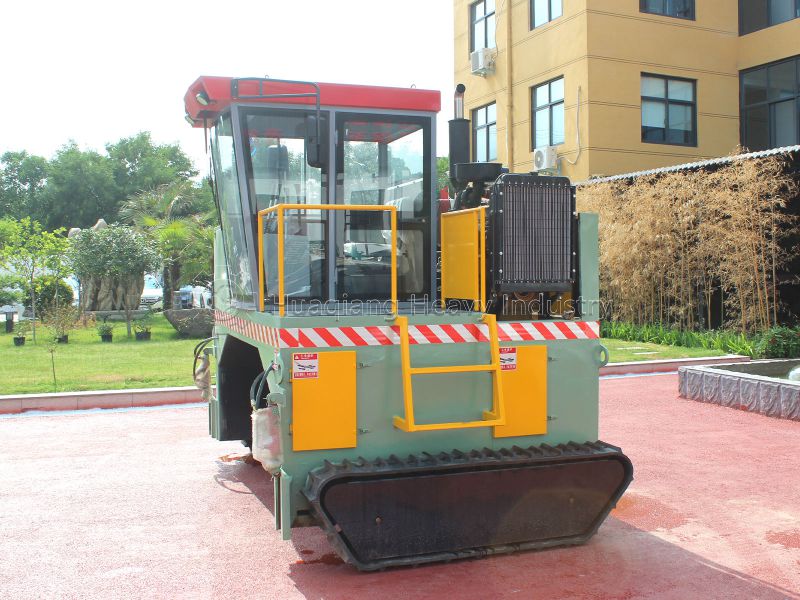How can you prevent organic fertilizer from “fermenting and spoiling” when using a windrow compost turner?
Many people use windrow compost turners, thinking that “just turning it is enough.” In reality, they fail to pay attention to details, which can easily lead to spoiled compost (turning it black, smelling, or not fermenting thoroughly).
First, adjust the frequency of turning based on the compost temperature. If the compost temperature is below 45°C, microbial activity is low, so turning it every two days is sufficient. Avoid frequent turning. If the compost temperature exceeds 65°C, turn it once a day. Use a windrow compost turner to move the hot material to the surface to dissipate heat and prevent beneficial bacteria from being killed. This will keep the compost temperature stable at 50-60°C, ensuring optimal fermentation.

Second, check the moisture content of the compost when turning it. If the turned material sticks to the blades and cannot be shaken off, it is too wet. Sprinkle a layer of dry straw on the compost before turning it again. The compost turner will automatically mix it during turning. If the material breaks down and becomes dusty when turned, it is too dry. Spray water on it while turning it, and control the moisture content so that it can be clumped when held in the hand but falls apart when released.
Third, don’t forget to turn the “edge piles.” Many people only turn the large pile in the center, neglecting the smaller piles on the sides, which can cause them to under-ferment. A windrow compost turner can move in a “U-shaped” pattern, turning the center first, then moving around to the edges, bringing the material toward the center, ensuring every pile is turned.
